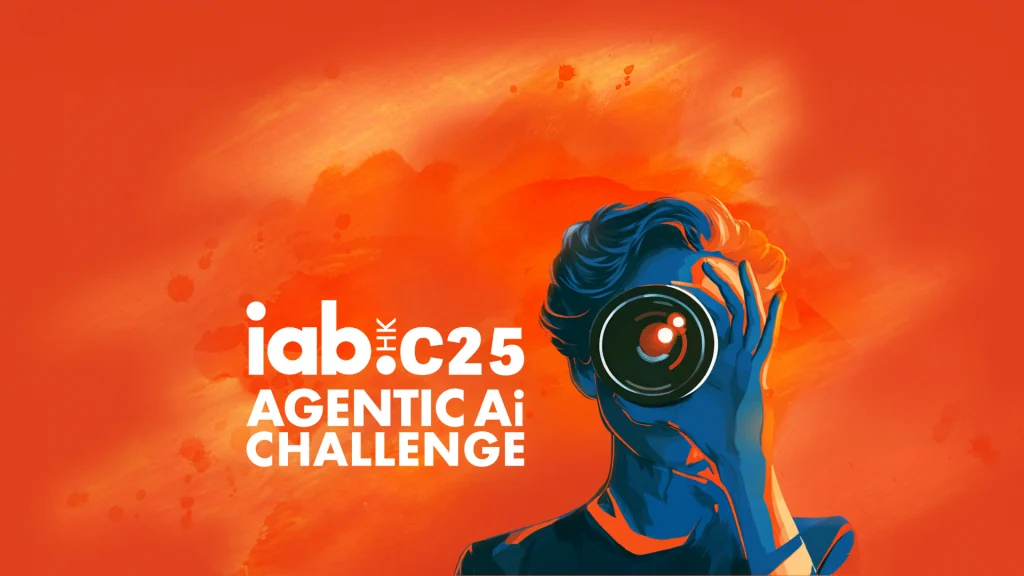From Automation to Autonomy: Lessons from the IAB HK C25 Agentic AI Challenge

When we talk about AI in marketing, the conversation often stops at efficiency: faster copywriting, quicker reporting, easier publishing. But the real transformation begins when AI starts to act autonomously, sensing needs, making contextual decisions, and executing multi-step workflows without constant supervision. That was the premise of the IAB HK C25 Agentic AI Challenge, and the experience of building an end-to-end agent taught me what it truly means to move from automation to autonomy.
I participated in the first-ever Agentic AI Challenge this October, which was organized by IAB Hong Kong and tested the ability of AI agents to quickly solve real-world marketing problems. That a competition project would develop into a functional prototype that could revolutionize how brands manage social media, particularly in highly regulated industries like banking, surprised me. My entry, “Repurpose Machine for Banking Sector,” turned into a real-world illustration of how agentic workflows can scale content creation without sacrificing accuracy and brand governance.
The Problem: Slow, Manual, and Inconsistent
Anyone managing social content across multiple platforms knows the pain points well. Each campaign brief goes through countless copy-and-paste cycles: drafting captions, sourcing visuals, adapting formats for Facebook, Instagram, and X, double-checking character limits, hashtags, tone, compliance notes, and brand rules. It can take over 90 minutes just to prepare and post to three channels, and that’s before quality control.
For resource-stretched teams, this process is unsustainable. It delays responsiveness, creates inconsistency, and drains time that should be spent on strategy. That became the problem statement driving my entry.
The Agentic Solution: Sense → Generate → Shape → Publish → Log
Instead of treating automation as isolated tasks, I built an agentic workflow designed to think and act across the full content lifecycle, from brief to post-publication logging, using n8n as the orchestration layer and Blotato for automated publishing.
Here’s how it worked:
- Trigger Activation: The agent started on schedule or on command.
- Task Retrieval: It pulled a ready-to-execute brief from a shared Google Sheet.
- Brand Rules Injection: The system referenced a master style sheet that served as the single source of truth for brand voice and bilingual order (Traditional Chinese first, then English).
- Bilingual Caption Drafting: The AI generated both language versions in one pass while maintaining tone consistency.
- Channel-Specific Shaping: It automatically adapted captions for Facebook, Instagram, and X, adjusting tone, length, and hashtags for each platform.
- Visual Generation: Platform-optimised visuals were created on the fly.
- Auto-Publish via Blotato: Posts went live simultaneously across all three platforms.
- Audit Trail Write-Back: The system logged every step, including posting status, time, and final captions, back to the same spreadsheet row for full transparency.
Every purple step in the workflow was tracked for accountability, every blue step was linked to governance, and every green step was automated. The agent did not simply carry out the task; rather, it self-documented.
The Results: From 90 Minutes to 7 Minutes
Pilot testing showed that the Repurpose Machine reduced turnaround time per three-channel post from around 90 minutes to just 5–7 minutes, with virtually no manual intervention beyond the initial trigger. Manual touchpoints dropped from 6–8 to 0–1. Posting errors and formatting issues were eliminated. Throughput capacity increased 10 to 15 times per content manager, and every post carried an audit trail for traceability, a crucial requirement for regulated industries like banking.
These aren’t theoretical gains. They prove that agentic AI isn’t about novelty; it’s about measurable efficiency, governance, and reliability.
What I Learned About Agentic AI
1. Governance is design, not afterthought.
Brand compliance should not be checked only after content goes live. It can be designed directly into the workflow through embedded prompts, tone logic, bilingual order, and automatic checks.
2. Automation works best with clear boundaries.
Even an autonomous agent needs checkpoints. I maintained two manual approval gates: one for risk review and one for campaign pivoting. This balance kept human oversight while maintaining speed.
3. Speed is valuable, but trust is essential.
The goal was not only to post faster, but to post confidently. The audit log turned automation into a verifiable, transparent process.
4. Agentic AI demands a new skill mix.
Building the agent required a blend of marketing strategy, workflow design, and systems thinking. This cross-disciplinary mindset, half strategist and half technologist, will define the next generation of marketing professionals.
What This Means for Marketers and Communicators
The transition from automation to autonomy is reshaping how we work. Content teams will still rely on human creativity for storytelling, tone, and brand nuance, but AI agents will increasingly manage the repetitive middle layer: multi-platform adaptation, quality assurance, and publishing.
This evolution will create hybrid roles such as AI-enabled strategists and marketing engineers who design, train, and monitor these systems. It will also demand new governance models to ensure transparency, accountability, and brand safety as workflows run autonomously.
The takeaway is simple: agentic AI does not replace creativity, it frees it.

Final Thoughts
Participating in the IAB HK C25 Agentic AI Challenge was more than a competition. It was a live test of how far AI autonomy has advanced and how ready it is for real-world deployment. It reinforced that AI is not here to replace us, but to work with us, amplifying human insight, strengthening governance, and freeing up space for higher-order thinking.
Autonomy is powerful, but trust is what makes it transformative. As communicators, our role is to design that trust into every workflow, one agent at a time.
Rachel Pang
Project Director, Ruder Finn Interactive Asia